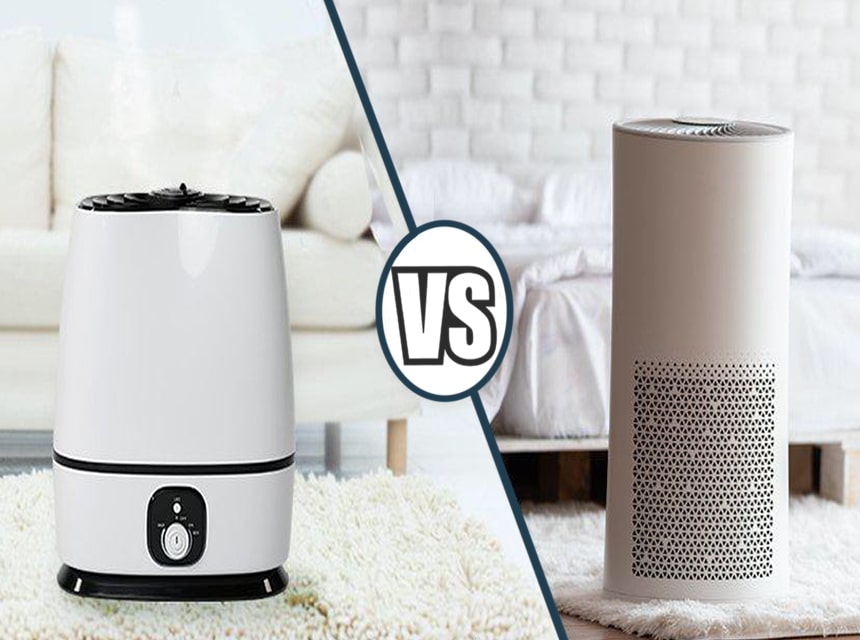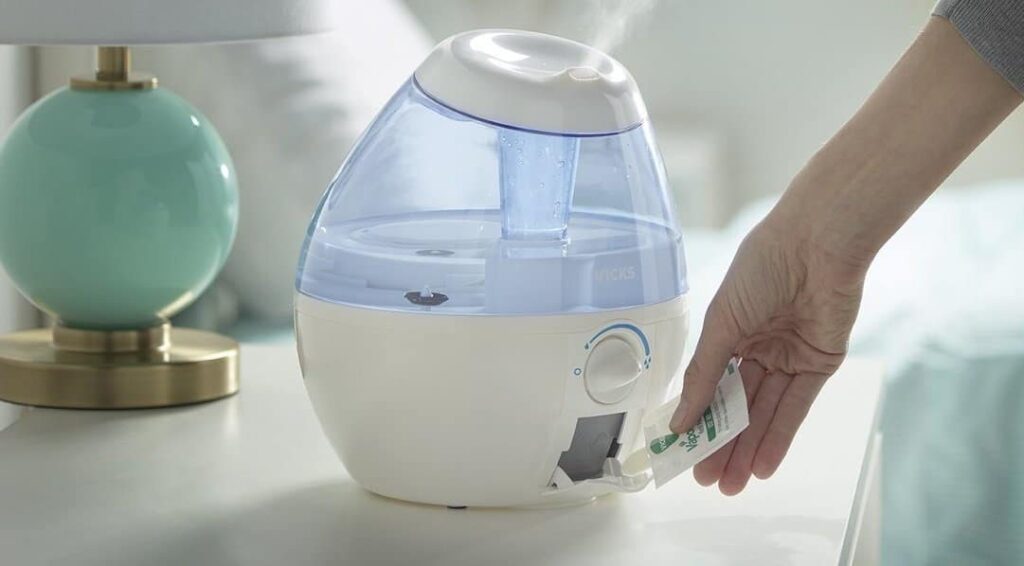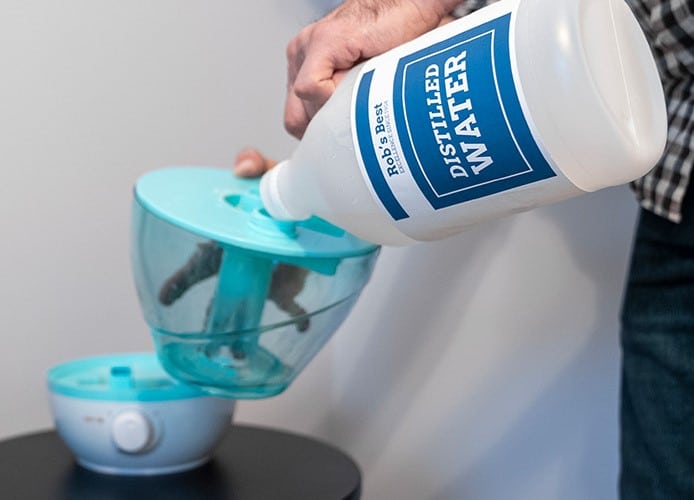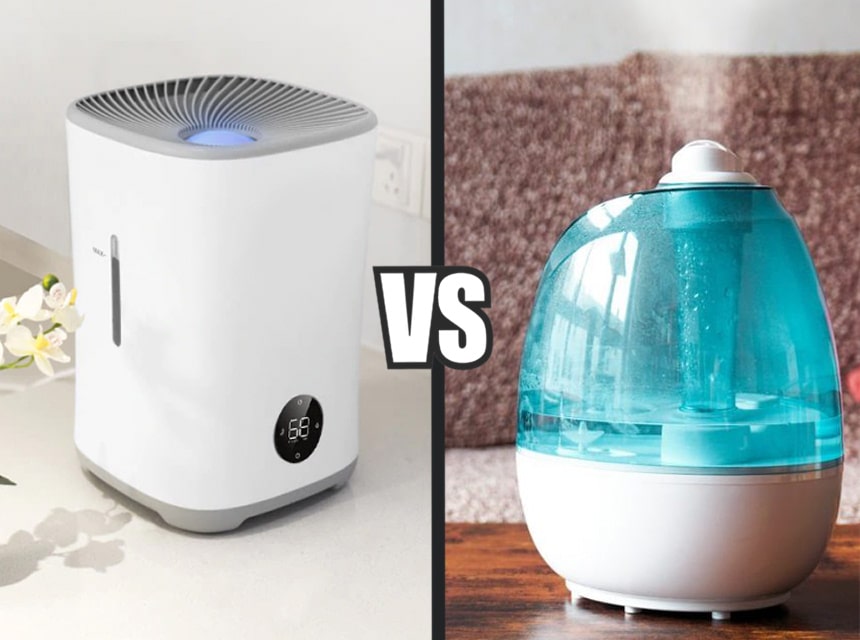If you live in a region with a dry climate, you likely know the irritating effects of regularly breathing dry air – it can cause your nose and throat to feel scratchy all the time and even contribute to respiratory infections. While you can add moisture to the air by installing small humidifiers throughout your house, a better solution is to opt for a furnace whole house humidifier. The best furnace humidifier is installed directly in your home’s HVAC heating system to add moisture to the air that is being heated and circulated throughout your home.
To help you find the best furnace humidifier, we analyzed a few critical features of these units. We first looked at the type – bypass or fan-powered – which dramatically affects the humidifier’s effectiveness and price. We also considered the size of home that each humidifier is designed to work for and the maximum moisture output per day, which you need to account for depending on the size of your home. Finally, we looked at the size of each unit, since it has to fit in the often cramped space of your furnace room.
We spent tens of hours reading through technical specifications and customer reviews for the most popular furnace humidifiers. The result is our list of the five best furnace humidifiers for all homes and budgets in the table below. Continue reading for detailed reviews of each furnace humidifier, complete with pros and cons. Our buying guide covers everything you need to know about how to choose the furnace humidifier that is right for your home, and finally we sum up our three overall favorite humidifiers on the market today.
More features: provides service, temperature and relative humidity indicators in manual mode as well
Users with large homes loved this fan-powered furnace humidifier from Aprilaire, which is rated to cover 4,200 square feet and puts out up to 18 gallons of water per day. The humidifier has both manual and fully automatic controls, making it suitable for both people who want to conserve energy and water in manual mode and those who want to set the unit and forget about it. Users found that the automatic digital controller works exceptionally effectively, while the manual mode provides service, temperature, and relative humidity indicators so that you can adjust the output of the humidifier accordingly. Many users commented that they could feel the difference in the air in their homes within a few days once this humidifier was turned on.
The unit is somewhat large, which can make it difficult to fit into tight ducts around the furnace itself, so be sure to check whether you will have space for it to fit. In addition, users found that this humidifier is far less designed to be installed as a DIY project and Aprilaire strongly recommends hiring an HVAC contractor for the installation, which adds several hundred dollars to the price. The humidifier also does not come with a 24V wall outlet transformer, so you will want to purchase one of those as well to keep it running smoothly.
Aprilaire offers a five-year limited warranty on this controller, although users do not report any issues with its durability over that period.
More features: includes HumidiPRO Digital Humidity Control
This humidifier is an excellent choice for homeowners who want to keep a consistent humidity in their home’s air thanks to Honeywell’s HumidiPRO digital humidity control. The controller does not require any manual intervention, so you don’t have to think about the humidifier throughout the day, but it modulates the unit’s water intake to keep a consistent humidity as your furnace turns on and off. The humidifier also works well for large homes and is rated for 4,000 square feet of coverage, using up to 18 gallons per day when the heater is running at full blast.
Users found that this humidifier was straightforward to install by yourself and comes with a detailed set of instructions. However, customers note that while the humidifier can be hooked up to either a hot or cold water line, it is much more effective when using hot water – which means it may increase your energy bill significantly in turn. In addition, this humidifier is somewhat larger than other options, which might make it difficult to install in tight ducts directly over the furnace. If that is an issue for you, it can also be installed on return air ducts, but the efficiency of the humidifier will be decreased since the air will be colder.
Honeywell offers a five-year warranty on this humidifier, and unlike the other unit from Honeywell that we reviewed this model does not appear to have issues with circuity breakdown over time.
More features: permanent memory – programming, time and date are not lost during a power outage
This bypass furnace humidifier from Aprilaire is a great option for those on a budget and don’t need the high performance offered by a fan-powered humidifier. Even without a fan, this humidifier is capable of adding 16.8 gallons of water per day to your air when your furnace is running at full blast and is rated to provide enough humidity to cover a 4,000 square foot home.
Users loved the controls on this humidifier, which allow you to set either a consistent schedule or seven-day programming so that you can change the humidity settings for each day of the week – perfect if you are out of the house for work most of the week and want to conserve water and energy. If the humidifier has not been run in a while, it will actually use an internal blower to sample the air and then can kick on humidifying if the air is below a set humidity. Best of all, your settings won’t be lost in a blackout since an internal battery allows the humidifier to keep a permanent memory. Although buyers found that the humidifier uses a surprisingly large amount of water, most were okay with this given how much it improves the quality of the air throughout the home.
Installation is not meant for the non-professional, although many users found that they could perform it themselves with a few trips to the hardware store. Be careful, however, that you do not void Aprilaire’s five-year warranty on the humidifier by installing it yourself without an HVAC technician.
More features: automatic mode with an outdoor sensor for temperature compensating control; integral humidity control bypass damper
Users love this fan-powered humidifier from GeneralAire, which provides excellent performance for medium-sized homes up to 3,000 square feet in size. The unit humidifies up to 18 gallons a day when your heater is running full speed, which is on par with humidifiers that are rated for homes with an extra 1,000 square feet of area to humidify – so you will notice the difference in your air pretty immediately.
Users found that the humidifier was extremely easy to install as it comes with everything you need to get it running. The instructions also provide details for wiring the humidifier since it requires only 24V rather than 120V – GeneralAire offers an additional 24V sensing relay kit that many users opted to purchase during the installation.
The humidifier makes some fan noise when it is running at full speed – usually when your heat is turned up – but most users did not find this to be an issue. The humidifier also has an automatic mode with a temperature compensating control that makes it easy to set the humidifier and then forget about it.
Another significant advantage to this unit is that it comes with a 10-year warranty, the longest among humidifiers that we reviewed. However, note that GeneralAire highly recommends a contractor installation to avoid voiding the warranty. Users did not report any issues with the humidifier breaking down over the first few years of use, and many commented positively on GeneralAire’s customer service team.
More features: mounting on either warm air supply or return air duct of any forced-air furnace
Users liked the performance of this fan-powered furnace humidifier from Honeywell, which boasts a massive covering area rating of 4,200 square feet. The unit is very simple, with few of the digital controls and programming that other humidifiers offer, so it is great for those who want to set the humidifier and then forget about it until it comes time to change the filter a year later. Users found that the humidifier works well for the entire house, never allowing the humidity to drop below 10-15% even on the coldest, driest winter days.
Installation of the humidifier is relatively straightforward, although note that you will need to purchase an additional installation kit from Honeywell. Users also appreciated the low-profile flow-through design of this humidifier, which allows it to protrude only about a one-half inch into the ducts – making it a good option if you have a small duct area in your furnace room. Plus, the unit can be mounted either right above the furnace or nearly anywhere in your duct system if you have a forced air supply.
Some users noted that the lifespan of this humidifier is relatively limited, which may explain why Honeywell only offers a one-year warranty. Users found that the water supply solenoid and the circuit board are both prone to frying, likely from poor interior construction that allows them to get wet over time, so you will need to plan on replacing the solenoid and potentially the entire unit after five years or so of consistent use. Beware that buyers also reported issues with Honeywell’s customer service when trying to activate the one-year warranty.
Now that you’ve learned more about our five favorite furnace humidifiers on the market today, how do you choose among them to find the humidifier that is right for your home? In our buying guide, we’ll explain the basics of how furnace humidifiers work and then dive into some of the critical features you need to understand in order to choose the right furnace humidifier.
You may want to install a humidifier for a number of reasons. Some people buy humidifiers for asthma and cough relief, others desperately surf the net in search of the best humidifier for sinus problems. Whatever your reason is, a furnace humidifier is an effective whole house solution.
There are several different types of furnace humidifiers, all of which work in somewhat different ways to produce steam and move it through your HVAC duct work. The primary types of furnace humidifiers are evaporative (fan-powered) and bypass humidifiers.
Evaporative, or fan-powered, humidifiers, simply expose the hot air produced by your furnace to a slow but constant trickle of water as it flows by. The hot air naturally evaporates some of the water as it passes, thus incrementally increasing the moisture of the air moving through your ducts. Evaporative humidifiers are by far the most common type of furnace humidifiers since they are inexpensive to install and require very little maintenance beyond changing a filter once every year or so.
Bypass humidifiers are cheaper; they are fully dependent on your furnace system since they don’t have their own fan or steamer. The airstream simply goes through the humidifier’s evaporative pad thus delivering moisture throughout the house.
Not all furnace humidifiers are designed in the same way or for the same types of households. In this section, we’ll cover the essential features you need to know about to help you choose the furnace humidifier that’s right for your home.
One of the most important decisions you need to make when choosing a furnace humidifier is whether to opt for a fan-powered or bypass model. Fan-powered humidifiers, as the name suggests, have a fan inside that helps them to push air through the humidifier, while bypass humidifiers like the model from Aprilaire do not have a fan.
This may not seem like much, but having consistent air movement allows more water to be evaporated, which means the humidifier can work more water efficiently and produce significantly more humidity per day than a bypass system without a fan. Fan-powered humidifiers can also be used when the furnace is not on since it is not dependent on convection from the hot air.
However, fan-powered humidifiers tend to be more expensive than bypass ones, and so the latter are more common for this reason. In addition, since there is no fan, bypass humidifiers make no noise, and there are fewer moving parts that can break and require maintenance.
The covering area is usually measured in square feet and describes the size of the house that a furnace humidifier is rated for. Putting a humidifier in a house that is too large – for example, putting the GeneralAire humidifier in a massive 4,000-plus square foot house – will mean that none of the house will have air that is humidified to the degree it should be for comfort. On the other hand, having a humidifier with a massive coverage area for a small home is overkill and a waste of water and electricity. In case your home is very small or you don’t need it to be entirely humidified, think of getting a powerful humidifier for large rooms.
The coverage area of the humidifier you choose should match the square footage of your home, minus any rooms that are not connected to your duct system.
The maximum output per day describes the amount of water that can be evaporated into your heated air in a 24-hour period when the humidifier is running at full speed. This output is directly related to the rated covering area of each humidifier, although there is some variation between manufacturer’s ratings. In general, 16 gallons per day or more of water output is plenty to cover most 3,000-4,000-plus square foot homes.
The weight and size of your humidifier can be an important consideration if you have to place your humidifier in a cramped furnace room or need to carry it into a basement or attic. For example, if you have a very small furnace room, you may want to opt for a furnace humidifier with a smaller footprint like he unit from Honeywell.
Once the humidifier is installed, you shouldn’t need to move it around except for occasional maintenance.
A furnace humidifier is one of those home investments that you want to purchase only once and then forget about it as it works without issue – so having a good warranty from the manufacturer can be necessary for your peace of mind. Many manufacturers offer five-year warranties, while <https://www.amazon.com/dp/B000WCL6R2/?tag=habo100-20″>GeneralAire offers an impressive 10-year warranty on their furnace humidifier.
There are a number of other small considerations that go into choosing a furnace humidifier. For example, some humidifiers like the one from Honeywell have automatic controls to turn on and off based on the temperature and humidity, as well as programming functions so you can set the levels at which they turn on and off.
For fan-powered furnace humidifiers, fan noise can also be a consideration – although this may not be as important to you as other features if your humidifier will be installed in a basement furnace room.
Our three overall favorite furnace humidifiers on the market today are the GeneralAire 1000A, the Aprilaire 700, and the Honeywell HE300A1005.
The Aprilaire and Honeywell humidifiers are rated for homes of 4,000 square feet in size or more, which makes them perfect for families with multiple bedrooms to humidify, although both can be large to install in tight furnace ducts. The Aprilaire unit comes with both manual and automatic controls, while we feel the HumidiPRO digital controller on the Honeywell is one of the best automatic humidifier controls you can get to set the humidifier and forget about it.
We rate the GeneralAire humidifier as the overall best furnace humidifier you can get, especially if your home is 3,000 square feet or smaller, thanks to its impressive 18-gallon per day output over that area, the ease with which anyone can install the unit by themselves, and the manufacturer’s 10-year warranty.





